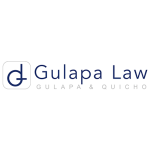REGULATORY FRAMEWORK
1.1 What is the applicable legislation and who enforces it?
The applicable legislation is Republic Act 10667, otherwise known as the Philippine Competition Act (RA 10667) and its Implementing Rules and Regulations (IRR). These are enforced by the Philippine Competition Commission (PCC).
JURISDICTIONAL TEST
2.1 What types of mergers and joint ventures (JVs) are caught?

The types of mergers and JVs that are caught are those which substantially prevent, restrict or lessen competition in the Philippines in the relevant market or in the market for goods or services, as determined by the PCC. These mergers and JVs must acquire decisive influence to be caught.
2.2 What are the thresholds for notification, how clear are they, and are there circumstances in which the authorities may investigate a merger falling outside such thresholds?

The thresholds for notification are reasonable and sufficiently clear. Parties to an M&A must notify the PCC in the following situations: if the aggregate annual gross revenues in, into or from the Philippines, or value of the assets in the Philippines of the ultimate parent entity of at least one of the acquiring or acquired entities (including that of all entities that the ultimate parent entity controls, directly or indirectly) exceeds 1 billion pesos ($20 million); and the value of the transaction exceeds 1 billion pesos. The criteria to determine whether the transaction value exceeds the threshold amount are intricately enumerated in Section 3 (b), Rule 4 of the IRR.
Where an entity has already exceeded the 35% threshold for an acquisition of voting shares, or the 35% threshold for an acquisition of an interest in a non-corporate entity, another notification will be required if the acquiring entity will exceed the 50% threshold after making a further acquisition.
In a notifiable JV transaction, an acquiring entity shall be subject to the notification requirements if either the aggregate value of the assets that will be combined in the Philippines or contributed into the proposed JV exceeds 1 billion pesos; or the gross revenues generated in the Philippines by assets to be combined in the Philippines or contributed into the proposed JV exceed 1 billion pesos.
Inasmuch as the PCC may, on its own, investigate mergers and JVs having a direct, substantial and reasonably foreseeable effect on trade, industry or commerce in the Philippines based on factors deemed relevant by the PCC, it is reasonable to conclude that it may investigate a merger falling outside the notification thresholds.
2.3 Are there circumstances in which a foreign-to-foreign merger may require notification, and is a local effect required to give the authority jurisdiction?

Foreign-to-foreign mergers or JVs may require notification but only if a local effects test is met. RA 10667 and its IRR are applicable to international trade having direct, substantial and reasonably foreseeable effects in trade, industry or commerce in the Philippines, including those that result from acts done outside the Philippines.
The IRR expressly provides that a foreign-to-foreign merger requires notification even if the assets are outside the Philippines, if the aggregate value of the assets in the Philippines of the acquiring entity exceeds 1 billion pesos; and the gross revenues generated in or into the Philippines by those assets acquired outside the Philippines exceed 1 billion pesos.
PRE-NOTIFICATION AND FILING
3.1 Is filing mandatory or voluntary and must closing be suspended pending clearance? Are there any sanctions for non-compliance, and are these applied in practice?

Filings are mandatory for M&As if the following elements are met: the transaction value exceeds 1 billion pesos; and the aggregate annual gross revenues in, into or from the Philippines, or value of the assets in the Philippines of the ultimate parent entity of at least one of the acquiring or acquired entities, including that of all entities that the ultimate parent entity controls, directly or indirectly, exceeds 1 billion pesos.
In such a case, closing must be suspended pending clearance. The PCC has 30 days from the parties' submission of all the required information to conduct its phase I review. If a phase II review (more detailed and comprehensive analysis) is needed, the PCC is required to inform the parties within the phase I period and is given an additional period of 60 days from the parties' receipt of the notice. The IRR limits the entire review process to 90 days from the submission of all the required information for phase I review. When these periods expire without the PCC having promulgated any decision, the M&A transaction shall be deemed approved and the parties may consummate it.
Failure to comply with the notification requirement and to observe the waiting periods renders the transaction void and subjects the parties to an administrative fine of one percent to five percent of the value of the transaction.
3.2 Who is responsible for filing and what, if any, filing fee applies?

Each party to a merger or acquisition that satisfies the elements in Item 3.1 is required to notify the PCC. The PCC had not promulgated the rules on filing fees for notifications as of November 10 2016. In practice, the Merger and Acquisition Office (MAO) currently does not impose any filing fees and has committed that it will not impose any until the rules on filing fees have been issued already.
3.3 What are the filing requirements and how onerous are these?

Each party to an M&A that satisfies the elements in Item 3.1 must submit a notification form and pay the applicable fee (but see discussion in Item 3.2). The notification form must be signed by a general partner of a partnership, an officer or director of a corporation or, in the case of a natural person, the natural person or his/her legal representative, and certified that the contents are true and accurate of their own personal knowledge or based on authentic records. Both the notification form and the certification must be notarised.
3.4 Are pre-notification contacts available, encouraged or required? How long does this process take and what steps does it involve?

Parties to a proposed M&A covered by Item 3.1 are allowed but are not required to request a pre-notification consultation with the staff of the PCC. During such consultations, the parties may seek non-binding advice on the specific information that is required to be in the notification.
The following information must be disclosed in order to be able to schedule a pre-notification consultation: the names and business contact information of the entities concerned; the type of transaction; and the markets covered or lines of businesses by the proposed M&A.
Given that the PCC has just been recently organised, there is still no available information as to the length of time that a pre-notification consultation takes.
CLEARANCE
4.1 What is the standard timetable for clearance and is there a fast-track process? Can the authority extend or delay this process?

The IRR provide the following clearance periods: for phase I – 30 days from submission of complete notification requirements; and for phase II – 60 days from parties' receipt of notice that more information and further analysis of the transaction is required. The PCC is allowed to issue its decision prior to the expiration of these periods but cannot extend or delay as this will result to the transaction being deemed approved. In practice, additional days in the timetable result from the parties' failure to submit all the notification requirements for the commencement of phase I review (and not due to the PCC's inaction).
4.2 What is the substantive test for clearance, and to what extent does the authority consider efficiencies arguments or non-competition factors such as industrial policy or the public interest in reaching its decisions?

The test for clearance and relevant factors considered is unclear and still evolving. While efficiency is considered (Sec. 10, Rule 4, IRR) and public interest is a factor for forbearance (Sec. 1, Rule 9, IRR), the PCC's establishment is too nascent to provide empirical evidence.
4.3 Are remedies available to alleviate competition concerns? Please comment on the authority's approach to acceptance and implementation of remedies.

In cases where the M&A agreement is deemed prohibited, the IRR allow the PCC to prohibit the implementation of the agreement, to require a specific modification of the agreement before it is implemented or to require the pertinent party or parties to enter into other legally enforceable agreements before implementing the agreement. Given the recent establishment of the PCC, it remains to be seen which one of these remedies the PCC will prefer.
RIGHTS OF APPEAL
5.1 Please describe the parties' ability to appeal merger control decisions – how successful have such challenges been?

RA 10667 provides that decisions of the PCC shall be appealable to the Court of Appeals in accordance with the Rules of Court. Typically, in other quasi-judicial proceedings, a motion for reconsideration is first required to be filed with the agency concerned prior to the appeal to the Court of Appeals, but this is not spelled out in the law. The PCC confirmed that the appeal procedure for decisions is still being drafted and will, more or less, be similar to other appeal procedures in quasi-judicial bodies.
YOUR JURISDICTION
6.1 Outline any merger control regulatory trends in your jurisdiction.
While RA 10667 was approved in July 2015, the PCC was only constituted in January 2016 and the IRR was only approved in May 2016. As a result, merger control and antitrust regimes in the Philippines are relatively new and still developing.
Apart from the RA 10667 IRR, the PCC has issued two clarificatory notes in relation to RA 10667: Clarificatory Note 16-001 on Definitive Agreements and Binding Preliminary Agreements in M&A and Clarificatory Note No16-002 on the Coverage of Compulsory Notification.
As of November 3 2016, there has been a total of 71 notifications to the PCC. The sector with the most number of notifications is finance and insurance, followed by manufacturing and then electricity, gas, steam and air-conditioning supply. In terms of value of transactions, manufacturing has the largest value of notified transactions, followed by finance and insurance and then human health and social work.
About the author |
||

|
|
Aris Gulapa Managing owner, Gulapa Law Manila, Philippines Tel: +6329602845 to 47 loc. 201 Aris Gulapa is the managing owner and head of the competition and antitrust practice of Gulapa Law. Gulapa Law is recommended by Asialaw Profiles 2017 for competition and antitrust. Mentored by leading experts in US antitrust and EU competition laws, Gulapa is a cross-border corporate lawyer with experience in competition and antitrust law accumulated from his legal practice in Vietnam, Singapore, Tokyo, New York and since four years the Philippines (pre-dating the Philippine Competition Act). Gulapa took his LLM in trade regulation from NYU School of Law where he studied US antitrust law under professor Harry First and EU competition law under professor Eleanor Fox. He worked as research assistant to professor First, former chief of the Antitrust Bureau of the Office of the Attorney General of New York. Gulapa is currently the lecturer of ASEAN competition law at the Ateneo Law School and was previously a visiting professor at Kyushu University Law School. |
About the author |
||

|
|
Marie Yasmin Sanchez Senior associate, Gulapa Law Manila, Philippines Tel: +6329602845 to 47 loc. 209 Yas Sanchez is a senior associate at Gulapa Law. She specialises in corporate-commercial laws, particularly fashion, entertainment and media (FEM) law, where she is considered one of the most active lawyers in the practice. She is currently advising one of the most important societies of artists in the music and entertainment sector on the effects of the new Competition Act in relation to their activities and previously advised the Republic on structuring the sale of the seized jewel collections of the Marcos family in light of both procurement and competition laws. Sanchez obtained her degree in AB Communication (cum laude) from the Ateneo de Manila University in 2007. She graduated with honors from its Ateneo Law School in in 2012. She also received the award for best thesis. |
About the author |
||

|
|
Dan Kevin Mandocdoc Junior associate, Gulapa Law Manila, Philippines Tel: +6329602845 to 47 loc. 203 E: dake.mandocdoc@gulapalaw.com Dake Mandocdoc is a junior associate at Gulapa Law. As a young counselor, he divides his time between the corporate and litigation practice areas of the firm, making him an effective and holistic competition and antitrust litigator. Mandocdoc currently handles several matters that are at the intersection of infrastructure or intellectual property, on the one hand, and competition and antitrust law, on the other. His present representations include advising private bidders on the validity of non-compete and related clauses in airport, real estate development, and rail project concession agreements under the new Competition Act. Mandocdoc obtained his BS Legal Management and Juris Doctor degrees (with honors in both cases) from the Ateneo de Manila University, where he now teaches as a member of its law school faculty. |

